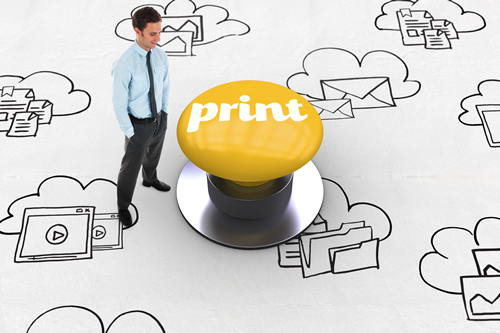It has been nearly 600 years since the printing press was invented. With this much history behinds us, why is printing across all the schools in a district so challenging?
There needs to be a better and easier way, as printing is an essential element for any education ecosystem.
A quick history of printing
Behind the click of the “print” button to the actual printer output is a complicated infrastructure that can wreak havoc if not set up properly. Printers need to be functional and loaded with supplies, staff and students must have proper access to the right printer, we must support an ever-growing pool of school and personal devices, and it must all be done affordably.
Recent private-sector innovation, driven by a more mobile workforce and the rapid growth of co-working spaces, has brought about print-management solutions with tools we can leverage to make districts future ready.
(Next page: The benefits of cloud printing)
The number of available printing solutions is slightly dizzying. The simplest are apps provided by printer manufacturers, like Apple’s AirPrint and Google Cloud Print; however, they don’t provide any management or payment options and are not a fit for anything but personal use. There are more traditional “coin-laundry-style” solutions that charge for printing, but they lack management capabilities, simplicity, and cost effectiveness. Typical enterprise solutions around print servers or print-management servers fail to take into account the large fleets of student-owned devices, rely on centralized directories, and lack billing integration.
In the last two years, cloud printing services have become quick, efficient, and affordable. Here are eight benefits cloud printing solutions bring to school libraries (and beyond).
1. You can manage your entire print infrastructure from the cloud.
Cloud services save cost and time while providing the latest and greatest technology and offering a much-needed modernization for many legacy IT functions. With that modernization comes a chance to consolidate disparate tools across the district to reduce IT support costs.
2. You can eliminate printer drivers.
Printing-as-a-service lets users easily connect from a school or personal device to the school district’s environment without needing IT support. No more testing, distributing, and updating printer drivers, which greatly reduces IT costs. With the right solution, users and printers no longer need to be on the same network, shielding internal systems from malicious intent and curiosity.
3. You can easily define print rules.
With just a few clicks, each group can enforce policies such as mandatory duplex printing, page limits, or access to color printing. Users are not confused by having to pick from a large pool of printers—they only see printers available to them.
4. You can manage users and groups flexibly.
The right cloud printing solutions can either connect to existing directory services or offer a simple web-based console for group users to segment required access levels by school, role, or function.
5. You can automate various functions.
Printing can easily rack up large, incalculable expenses across a district when the number of pages printed spirals out of control. With cloud printing, districts can easily define quotas for free pages for each user group and eliminate or charge for excess use. You can do this using internal billing systems or, if students are old enough, via credit card-funded student accounts.
6. You have access to analytics.
Who is printing the most? Can user behavior be influenced? Does your district have the right number and best type of printers for the volume and type of printing? The better you understand the print environment, the better you’ll be able to negotiate with suppliers or take advantage of bulk purchases.
7. You can ensure print security.
Cloud-managed printing offers security benefits, especially if your district is Bring Your Own Device. Because users and printers don’t have to be on the same network, your infrastructure is safe from malicious intent, accident, and curiosity. Air-tight rules, integrated billing, and comprehensive reporting are complemented by on-demand release. This allows staff and students to confirm they are physically at the printer to pick up their documents.
8. You can offer mobile printing out of the box.
Today’s students rely on mobile devices, so it is imperative that a printing solution supports mobile printing. Support should be offered for iOS, Android devices, Chromebooks, or any other device that can create or access content and run a web browser. All of these devices should have access to the same printers as teachers, administration, and students already have from a Mac or PC.
The next step for perfect printing is surprisingly simple. Type “cloud-managed printing” into your favorite search engine, sign up for a free test account, and follow the initial setup steps. Within 15 to 30 minutes you’ll have a working proof of concept of your district’s future print infrastructure. Whichever vendor you pick, they can help you implement this important piece of the future easily and cost effectively.
- 5 ways school districts can create successful community partnerships - November 21, 2024
- Trump picks Linda McMahon to lead, and possibly dismantle, Education Department - November 21, 2024
- 6 ways to create engaging elementary learning spaces - November 20, 2024


